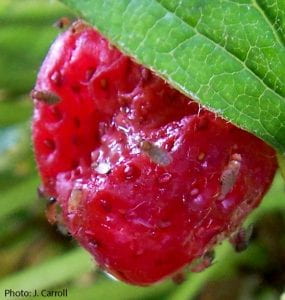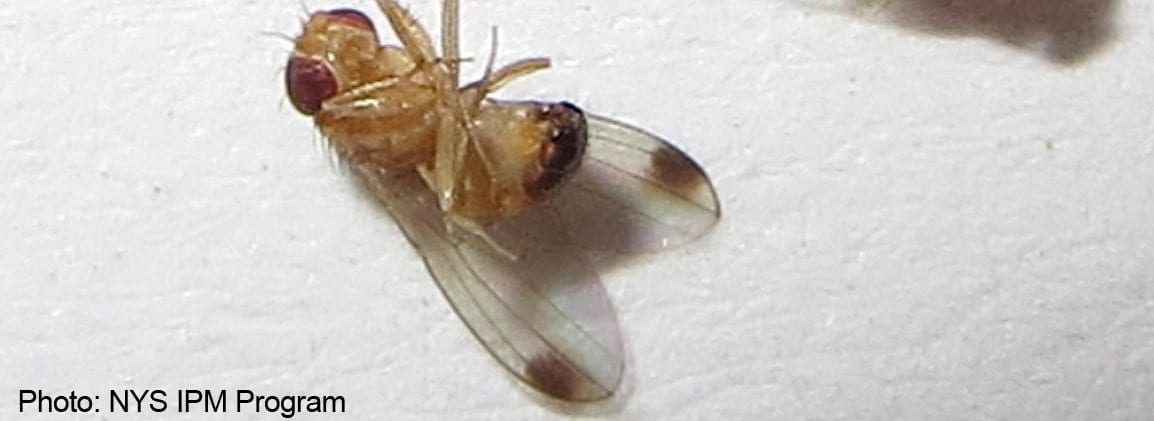One male SWD was caught in a Scentry jar trap during the week ending July 8, 2021. This in one of four traps (two jars and two sticky cards) set in a raspberry planting. These traps are being monitored by Don Gasiewicz, Wyoming County CCE. SWD has been caught at most locations that are monitoring across NY State.

As strawberries fields are renovated, SWD will move from this resource into other crops like raspberry, sweet cherry, tart cherry and blueberry. It is crucially important to renovate June strawberry plantings quickly and thoroughly to eliminate this SWD resource. If you are not planning to carry the strawberry field over for next year, plow it under and fallow the field or plant a cover crop. Read this blog, Renovate Strawberry Plantings Promptly, to remind yourself of best practices against SWD build up on your farm.
Early in the 'SWD season', when SWD arrives and before populations build up, use the most efficacious insecticide for your first spray to knock the SWD population back. Rotate insecticide use to different IRAC modes of action to prevent resistance. Follow label directions. Keep spray intervals tight and regular.
Early in the 'SWD season' it's also easier to practice sanitation of cull fruit. Don't allow cull fruit to build up in your Upick plantings. Its a lot easier to remove a reasonable amount of cull fruit than it is to face the prospect of picking out a lot of it. Fruit that falls to the ground — raspberries, blueberries, stone fruit, apples and pears — can be treated with insecticide. Though, not a lot of options, so don't overuse this tactic or you'll drive insecticide resistance. See the Quick Guide to Insecticides for Treating Dropped Fruits.

